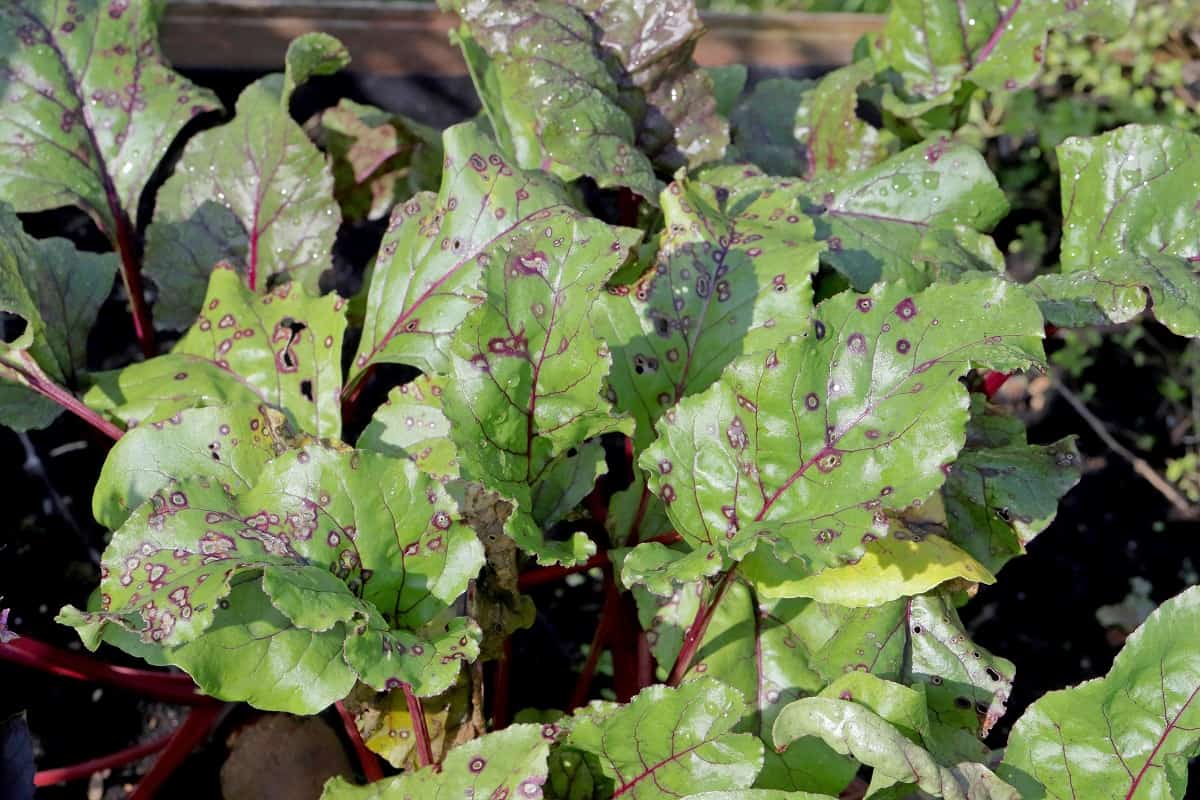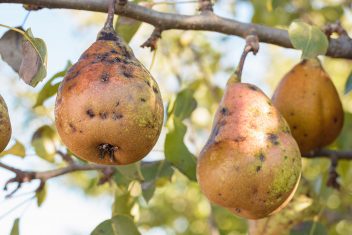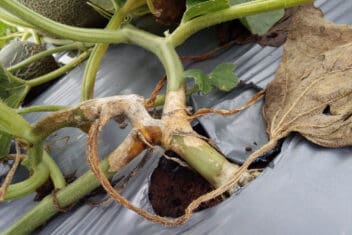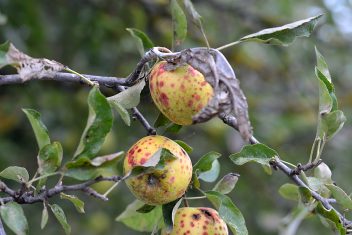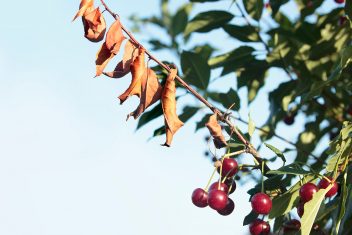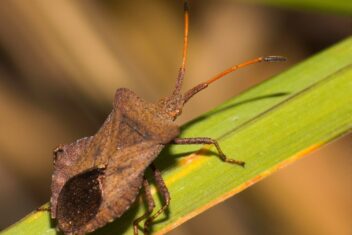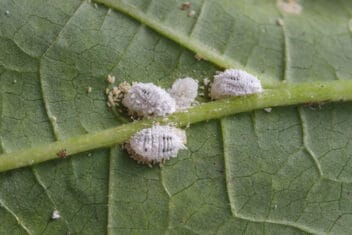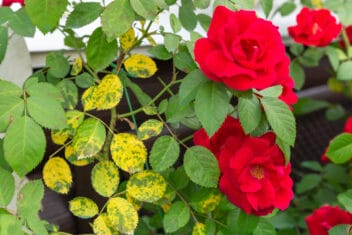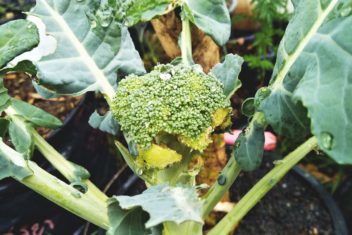A few years ago, I decided to finally give Swiss chard a chance.
I had always avoided growing this leafy green vegetable in my garden because I wasn’t sure that I would like its taste. After realizing that there wasn’t a leafy green I had tried yet and disliked – from kale to arugula, lettuce to spinach, I love them all! – I finally decided to give it a go.
Growing Swiss chard is advantageous for several reasons. It can be grown in warmer weather than many other leafy green vegetables and is considered a superfood, high in vitamins like C, A, and K.
Of course, its colorful appearance makes it a wonderful ornamental plant to mix into your landscaping, too.
It’s also a mostly trouble-free crop. It is not prone to many diseases or pests, but of course, like any plant, it does have its fair share of troublemakers.
If you decide to give growing Swiss chard a try, these are some pests and diseases you will have to watch out for.
How to Grow Swiss Chard
A member of the beet family, Swiss chard is more closely related to those bright purple root veggies than it is to other leafy vegetables, like kale.
It is best known for its colorful stems, available in a variety of hues including red, orange, pink, yellow, and white.
Although Swiss chard is typically grown as a cool-season crop, since it grows rapidly and easily during the colder temperatures of autumn and spring, it can also tolerate warm weather. Its growth slows in the summer but it can still be grown as a salad green once the mercury begins to rise – an advantage that it has over many other salad greens.
You can find a full guide to growing Swiss chard here but here are a few quick tips to help you get started.
First, know that the best time to plant this vegetable is about 2-3 weeks before the last spring frost. You can sow seeds directly into the ground but you should try to soak them in water for about 24 hours before you plant.
You can continue planting seeds every 10 days for a month if you’d like a cut-and-come-again crop.
The planting site should be fertile and located in partial to full sunlight. The soil should be at a 6.0-7.0 pH with seeds spaced ½-1-inch deep.
Water evenly and consistently to help the plant grow and mulch to conserve moisture and suppress weeds. Cut your plants regularly to ensure fresh, tender growth.
Most Common Swiss Chard Pests and Diseases
Growing Swiss chard is mostly an uncomplicated process. However, there are a few diseases and pests that you will need to keep an eye out for. Here are tips on how to manage them in your vegetable garden.
1. Aphids
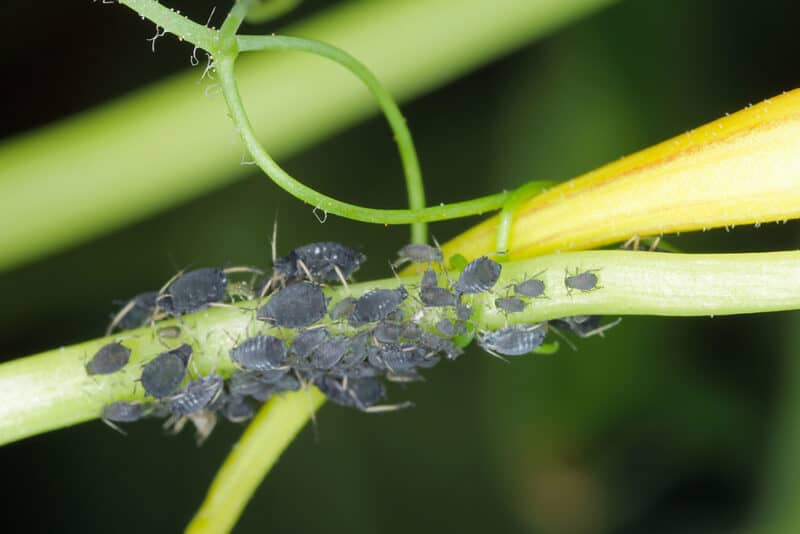
Unless you are 100% brand-new to gardening, there’s a good chance that you’ve already come across aphids before. There are hundreds of different species of aphids, each of which seeks out individual types of plants.
Bean aphids and peach aphids are the most likely to go after Swiss chard. These pests can be a dark to pale green.
Though they aren’t hugely damaging in small numbers, they can be annoying to deal with. If you just notice 1 or 2, you can blast these sap-sucking pests off your plants with a strong blast of water from your hose.
However, at higher populations, they can be dangerous. Not only do they leave behind a sticky substance, honeydew, that can attract ants, but their voracious feeding habits can reduce plant vigor. Not to mention the holes they leave in plants can cause the leaves to yellow and reduce your overall yields!
Aphids can also spread disease, so if you notice them on plants, it’s wise to get rid of them. Try to avoid using pesticides, as these can kill beneficial insects. Instead, use an insecticidal soap spray that is more natural.
2. Spinach Leafminers
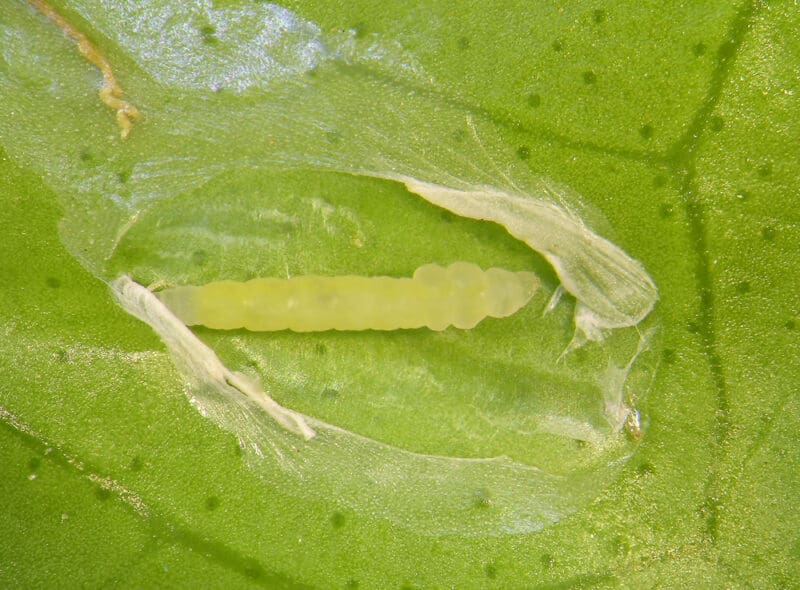
The spinach leafminer is another common pest. It is not the adult version of this pest that you need to be on the lookout for but the larvae. These pale white maggots look like miniature carrots.
These pests will damage the leaves of your Swiss chard so severely that they won’t be worth eating. You can prevent them by covering your plants with fine mesh netting or cheesecloth. Natural insecticidal soap sprays or pyrethrin-based sprays can work well, too.
3. Armyworms
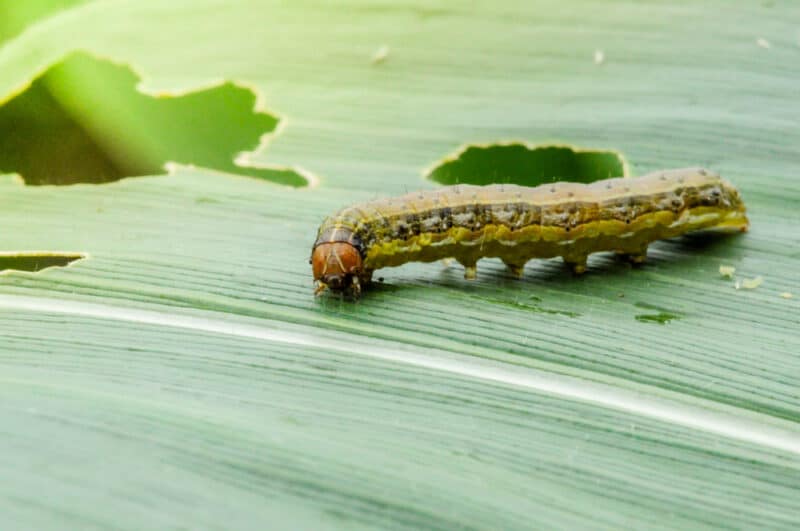
Several types of armyworms will launch an all-out attack on your Swiss chard plants – the beet armyworm, the fall armyworm, the Western yellow-striped armyworm, and the bertha armyworm.
These pests will nibble hungrily through the plant foliage, leaving behind ragged holes or even fully skeletonized leaves.
Using Bacillus thuringiensis is one of the most effective ways to get rid of these pests.
4. Flea Beetles
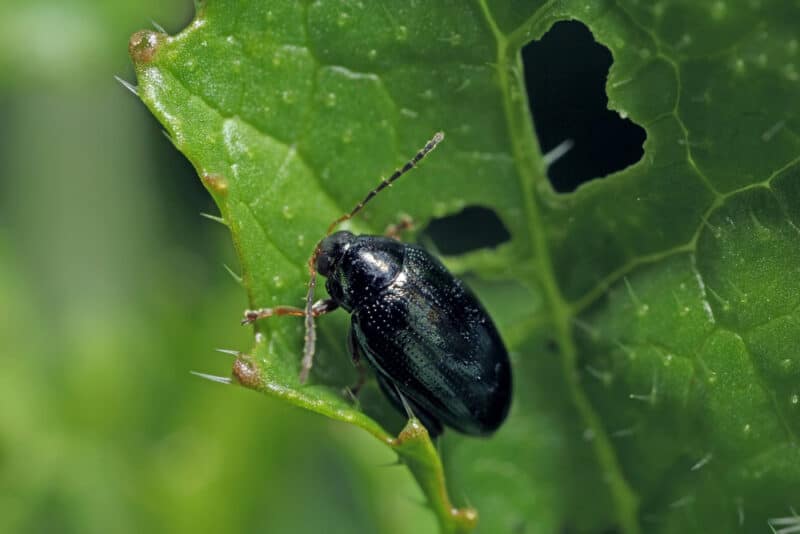
Finally, the last pest to watch out for is the flea beetle. These tiny pests are hard to detect since they are so small but you can catch and then monitor them by using sticky tape.
You’ll know it’s flea beetles causing damage if you notice that your leaves wilt suddenly or have a “shot hole”- like appearance. Occasionally, you might notice these teeny-tiny pests on the plants themselves, too. They can be black, blue, gray, bronze, or striped in color.
5. Leaf Spot
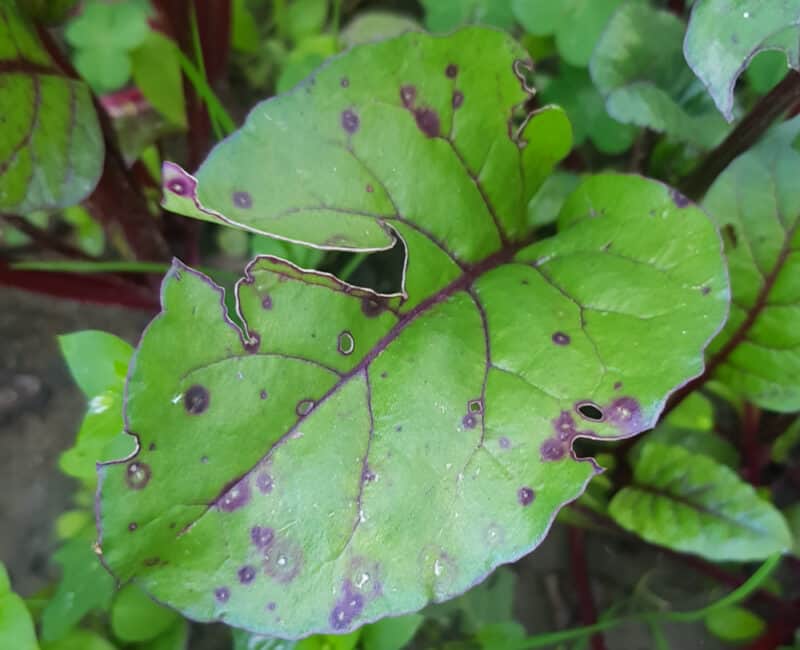
There are a few diseases that affect Swiss chard that aren’t fungal. Leaf spot, also known as Cercospora leaf spot, is a common Swiss chard disease – and it is a fungal disease. Leaf spot affects the lower leaves of the plant first and causes brown to grey or even black spots with purple halos to appear.
It is most common in warm, wet weather, as is the case with most fungal problems. You can prevent it by leaving plenty of space between your plants when you plant them. This will provide adequate air circulation that will make it harder for fungal spores to affect nearby plants.
Try to water only when needed. For the most part, Swiss chard is a plant that only needs to be watered when it is hot and dry. Thinning your plants can help prevent and control the spread of this disease as well.
6. Downy Mildew
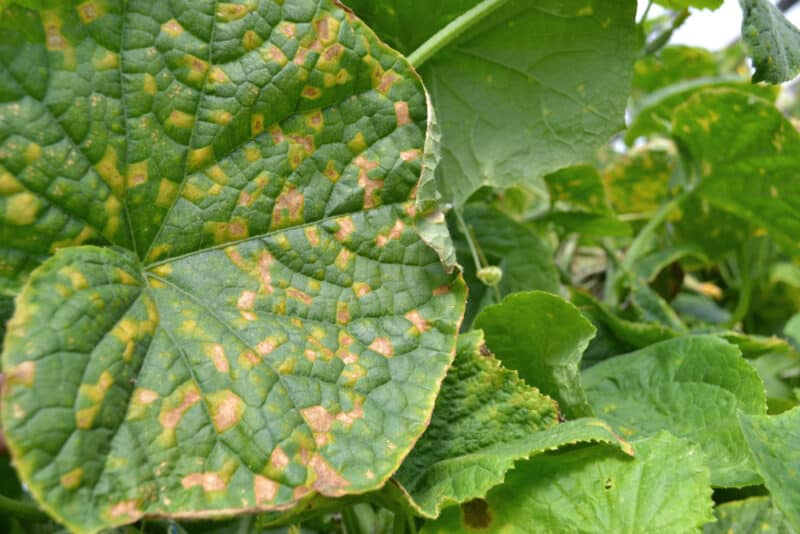
Another fungal disease to watch out for is downy mildew. Fortunately, all the steps you will take above to prevent and control the spread of leaf spot can also be followed in the prevention and treatment of downy mildew.
The other piece of good news about this disease is that it is rarely fatal. It can, however, make your leaves incredibly unappetizing to look at and eat. It causes white powdery growths to form on plant leaves.
7. Mystery Fungus
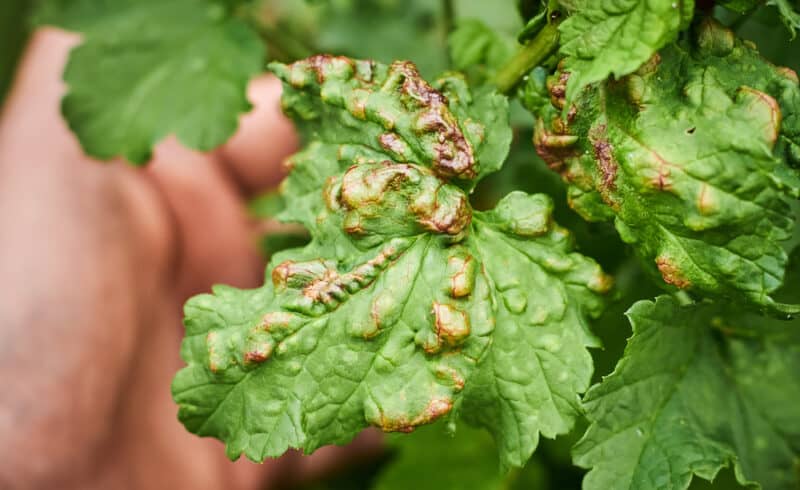
This disease is named “mystery” fungus because it is often unclear why it affects specific plants instead of the whole crop.
It occurs most often when the weather is wet and cold, going after plant leaves rather than the entire plant. The disease appears as blotches rather than circular spots, as is the case with many other fungal diseases. It is best treated with environmental controls (such as managing humidity) and using a fungicide to get rid of it.
8. Cucumber Mosaic Virus
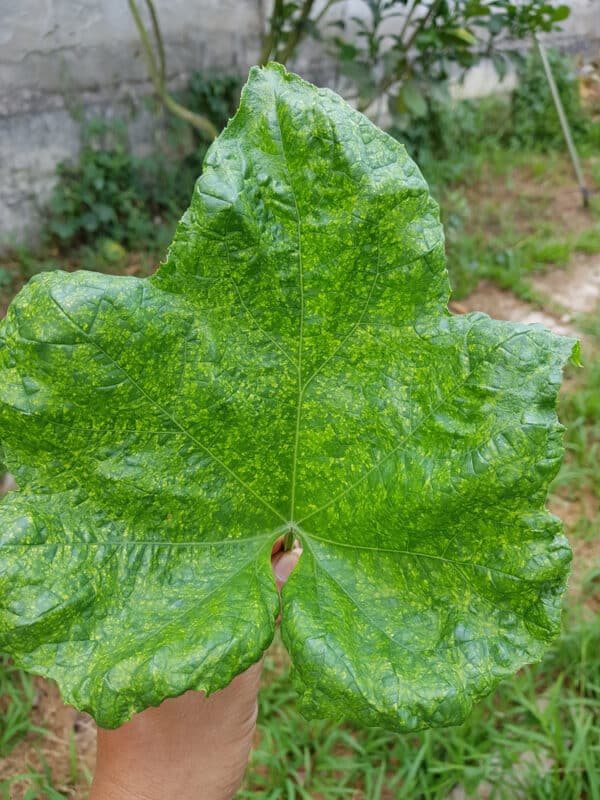
Last but not least is the cucumber mosaic virus. This disease can stunt the growth of your plants, causing them to grow extremely slowly.
It can affect just 1 or 2 plants instead of the entire crop, causing them to develop fainter mottling than you might find on healthy leaves.
There’s only one thing you can do to prevent this disease from ravaging your yields – and that’s working to keep aphids out of the garden. The cucumber mosaic virus spreads as aphids jump from plant to plant while they eat. Get rid of the aphids, and you can get rid of the virus.
Getting Rid of Swiss Chard Pests and Diseases
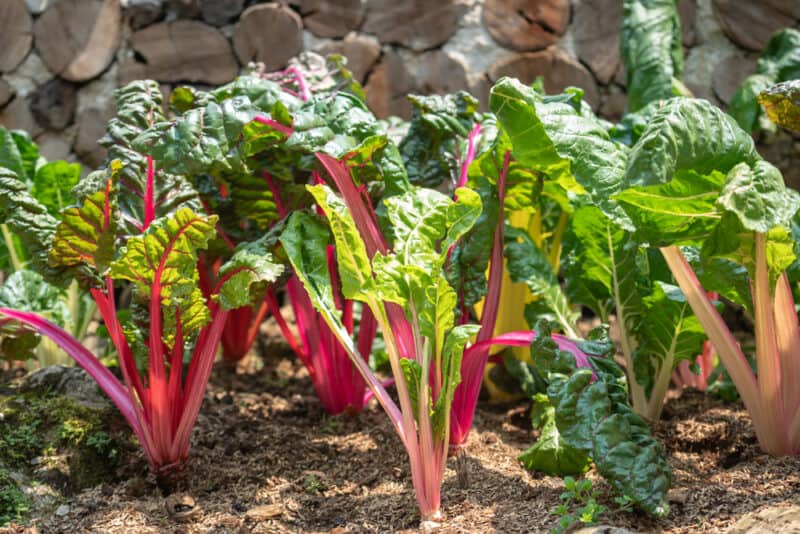
Making sure your Swiss chard plants are healthy from the time you plant your seed to the time you harvest the leaves is the best thing you can do to keep pests and diseases at bay.
Monitor your plants carefully and keep a watchful eye for any problems. By being attentive and providing your plants with everything that they need from the outset, you can eliminate problems caused by a vast majority of pests and diseases.
Stay vigilant – and you’ll be rewarded with a fantastic harvest in return.
